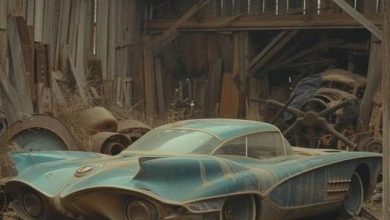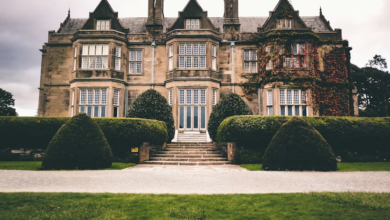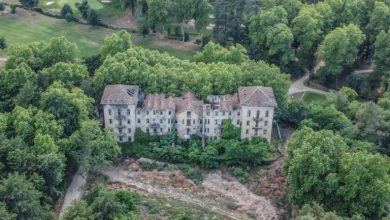The Bair House, located in Arcata, California, is a historic and charming Victorian home built in 1888.
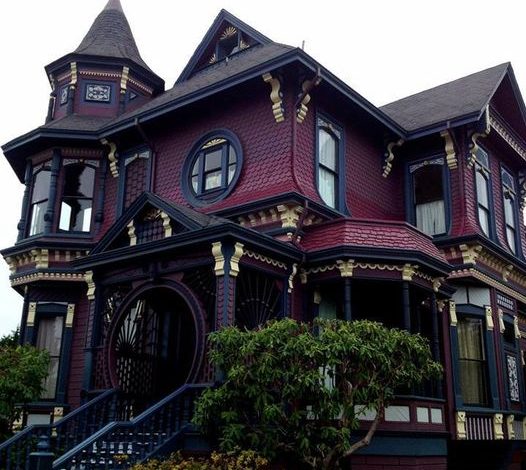
The Bair House, located in Arcata, California, is a historic and charming Victorian home built in 1888. This iconic residence is a striking example of late 19th-century architecture in Northern California, particularly representing the Queen Anne style.
Architectural Design:
The Bair House is a quintessential example of Queen Anne Victorian architecture, which was popular in the United States during the late 19th century, especially during the 1880s and 1890s. Queen Anne homes are known for their ornate, asymmetrical designs, decorative detailing, and large, sweeping porches. The Bair House exemplifies these characteristics in a variety of ways:
Asymmetrical Design: The house features an irregular floor plan, with multiple extensions, wings, and a complex roofline.
Decorative Trim: Like many Queen Anne homes, it boasts intricate woodwork, including spindles, turned posts, and gingerbread trim. The details reflect a sense of craftsmanship that was common in the late Victorian period.
Varied Materials: The house’s construction includes the use of wood shingles on the exterior, often overlapping to create texture. This is a signature detail of the Queen Anne style.
Porch and Balcony: The front of the house has a large wraparound porch with decorative balusters and a bay window that juts out from the façade, providing a prominent architectural feature. The second-story balcony adds elegance and a touch of grandeur to the house’s design.
Historical Significance:
The Bair House was built in 1888 for the Bair family, who were early settlers in Arcata and played an important role in the community’s development. Arcata, located in Humboldt County, was a key town in the region during the late 19th century, serving as a hub for logging, agriculture, and shipping along California’s northern coast.
The Bair family were likely involved in local business and commerce, and their home reflects the prosperity of the period. The house is one of the most well-preserved historic buildings from that era, showcasing not only the wealth and success of the family but also the community’s architectural legacy.
Preservation and Modern Role:
Over the years, the Bair House has been lovingly preserved, making it one of the most significant historic homes in Arcata. It stands as a testament to the architectural and cultural history of the region, offering a glimpse into life in Arcata during the late 19th century.
As a preserved historic property, the Bair House has become a valuable local landmark. It contributes to the character of Arcata, a town that has a strong sense of its historic identity. The house is often part of local tours and cultural events, drawing visitors interested in historic architecture and the rich history of California’s small towns.
Location and Surroundings:
Arcata is known for its vibrant historic district, with many buildings from the late 19th and early 20th centuries. The town is also renowned for its proximity to the stunning natural beauty of the Redwood National and State Parks, which draw millions of visitors every year. The Bair House, along with other historic buildings in the area, is part of this larger cultural and environmental setting, providing a unique link to the past while still contributing to the modern vibrancy of the town.
The Bair House in Arcata, built in 1888, is a prime example of Queen Anne architecture and remains one of the most significant historic structures in the region. Its elaborate design, historical importance, and well-preserved state make it a valuable asset to the Arcata community, offering insights into the past while standing proudly as a piece of local heritage.
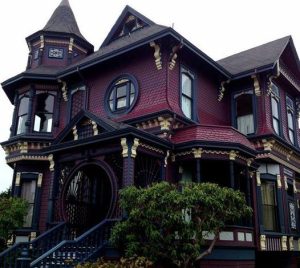
More on the Bair House’s Historical and Architectural Importance:
The Bair House is not only a significant architectural landmark in Arcata, but it also offers a unique window into the lives of late 19th-century residents of Humboldt County. Its continued preservation offers us a tangible connection to an era when Victorian-style architecture dominated and small towns like Arcata were flourishing in the wake of California’s expansion during the Gold Rush and beyond.
1. Architecture in Context:
The Queen Anne style that characterizes the Bair House is part of the larger Victorian architectural movement that swept across the United States during the late 1800s. In California, as in other parts of the country, Queen Anne homes were often constructed during periods of economic prosperity when materials like wood, glass, and iron were readily available, and architectural craftsmanship was at a high.
While many homes in this style had a focus on asymmetry and whimsical detailing, the Bair House stands out for its particularly refined craftsmanship and attention to aesthetic richness. The home features several ornamental details, such as:
Turret-like Projections: The tower-like, conical roof or turret is a hallmark of Queen Anne homes, and although the Bair House doesn’t have a full turret, it does have a similar cylindrical projection that adds to the verticality of the home.
Exquisite Woodwork: The detailed woodwork on the Bair House, including the decorative porch spindles, carved brackets, and fine trim work, showcase the craftsmanship of the period. Unlike the simpler homes of earlier eras, Queen Anne homes like the Bair House feature decorative trim and complex facades designed to reflect a homeowner’s wealth and social status.
Leaded and Stained Glass: Another hallmark of Queen Anne architecture is the use of stained glass or leaded windows, and it’s likely that the Bair House would have incorporated such elements to give the house a sense of grandeur and to let in natural light in an artistic way. While the house has been updated over the years, it’s likely that some of these original windows remain intact.
2. The Bair Family and Arcata’s Growth:
The Bair House was built during a time when Arcata was a hub of activity in the region, connected by the expanding railroads and industries like logging, fishing, and agriculture. The Bair family, like many of the early settlers in Arcata, played a crucial role in the town’s growth. Humboldt County, particularly Arcata, was a center of timber production, and as the railroad made it easier to transport timber from the interior to the coast, the region’s economic growth skyrocketed.
The Bair family would have been considered part of Arcata’s upper class, contributing not just to the town’s economic life but also its social and civic affairs. In this sense, the Bair House is symbolic of the wealth and refinement that the town’s affluent families aspired to during this period of economic prosperity.
3. The Role of the Bair House in Local History:
The Bair House has not only been a family home but also a representation of the larger trends shaping Arcata during the late 19th and early 20th centuries. Arcata was evolving from a town dependent on agriculture and timber into a small urban center with the construction of grand homes, schools, and civic buildings, many of which were designed in the Victorian style. The Bair House would have been one of the finest residences of its time.
The house also likely had a role in social and cultural events, given the fact that homes of this caliber were often used for gatherings, parties, and community meetings. Arcata’s Victorian homes were often the setting for community building and social interaction, reflecting the importance of social status and community cohesion during this period.
4. Preservation Efforts and Modern-Day Significance:
The Bair House has survived for more than a century thanks to the ongoing efforts of community members, preservationists, and local historians who have worked to maintain the historical fabric of Arcata. In an era where many historic homes were lost due to urbanization, neglect, or modernization, the survival of the Bair House is a testament to both the local community’s respect for its history and the overall preservation movement in California.
Preservation efforts have not only focused on maintaining the exterior features but also on ensuring that the house’s interior spaces, such as its parlor, dining room, and staircases, continue to reflect the architectural beauty and lifestyle of the Victorian period. Additionally, the home’s landscaping has also been preserved, maintaining the original gardens and yard space, which would have been a common feature in affluent Victorian homes, providing a serene outdoor area for leisure.
In recent years, the Bair House has become a cultural landmark in Arcata. It has been featured in local tours, as it is not only a great example of Victorian architecture but also a key site in the town’s historic district.
5. Arcata’s Historic District and Cultural Context:
Arcata is a small college town that is known for its historic district, which houses several Victorian homes and other structures from the late 1800s. The town’s commitment to preserving its architectural heritage makes the Bair House an integral part of the community’s identity.
The Humboldt State University and the nearby Redwood National and State Parks provide a unique juxtaposition of natural beauty and cultural heritage in Arcata. The Bair House, while small compared to the great estates of large cities, is a prime example of how rural communities in California also engaged with architectural trends of the time and built homes that reflected their social status and cultural aspirations.
In Arcata, homes like the Bair House are a tangible representation of the town’s past and a reminder of the early settlers’ contributions to the development of this region, especially as the timber industry was so significant to the local economy.
Conclusion:
The Bair House in Arcata, built in 1888, is a beautifully preserved example of Queen Anne Victorian architecture and serves as an important reminder of Arcata’s historical development during the late 19th century. As an architectural treasure, it reflects the wealth and aspirations of its original owners and the broader community of Arcata, which was at the center of a rapidly growing region in California at the time.
The house’s historic significance, architectural integrity, and cultural importance make it a vital part of Arcata’s heritage, and its preservation continues to offer future generations a tangible link to the past. It stands as a beautiful testament to the craftsmanship and creativity of the period and is an important cultural landmark in Humboldt County.

